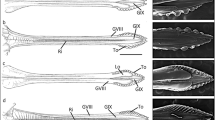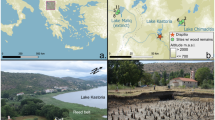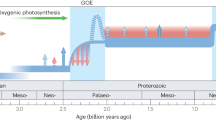Abstract
IT is necessary to know the natural concentration of common caesium in various organisms in order to predict the equilibrium distribution of caesium-137 in the biosphere. Advance in this field of knowledge is very slow, due perhaps to the difficulty of estimating very small concentrations of caesium in biological systems. The most significant contribution in this direction is that of Japanese scientists, who have estimated caesium-133 by activation analysis1–4. In the present work common caesium was measured by the isotopic dilution method with the mass-spectrometer MI-1305 (ref. 5). Potassium was measured with the Zeiss flame photometer. Muscle of fish from the Barents Sea and the Black Sea, and muscle of some birds of passage, of cows, reindeer and human beings have been used in this work.
This is a preview of subscription content, access via your institution
Access options
Subscribe to this journal
Receive 51 print issues and online access
$199.00 per year
only $3.90 per issue
Buy this article
- Purchase on Springer Link
- Instant access to full article PDF
Prices may be subject to local taxes which are calculated during checkout
Similar content being viewed by others
References
Yamagata, N., Ivashima, K., and Tajima, E., J. Atomic Energy Soc., Japan, 4, 534 (1962).
Yamagata, N., J. Rad. Res., 3, 158 (1962).
Yamagata, N., J. Rad. Res., 3, 9 (1962).
Yamagata, N., Nature, 196, 83 (1962).
Burovina, I. V., Nesterov, V. P., and Fleishman, D. G., Radiochimia, 5, 272 (1963).
Burovina, I. V., Glasunov, V. V., Leontyev, V. G., Nesterov, V. P., Skulsky, I. A., Fleishman, D. G., and Shmitko, M. N., Doklady U.S.S.R. Academy of Sciences, 149, 413 (1963).
Burovina, I. V., Nesterov, V. P., Skulsky, I. A., and Fleishman, D. G., Doklady U.S.S.R. Academy of Sciences, 154, 1229 (1964).
Hvinden, T., and Idllegraven, A., Nature, 192, 1144 (1961).
Virkkunen, V. E. J., and Vuorinen, A. P. U., Suomen Kemistileht, 8, 35 (1962).
Shakhijanyan, L. G., Radiobiologia, 2, 838 (1962).
Shakhijanyan, L. G., Starik, A. S., Fleishman, D. G., Glazunov, V. V., Leontyev, V. G., and Nesterov, V. P., Izvestia (Reports of the U.S.S.R. Academy of Sciences), Biology Division, 442 (1962).
Report of the United Nations Scientific Committee on the Effects of Atomic Radiation, 2, appendix 27 (1962).
Baarli, J., Madshus, K., Liden, K., and McCall, R. C., Nature, 191, 436 (1961).
Onstead, C. O., Oberhausen, E., and Keary, F. V., Atompraxis, 9, 337 (1960).
Yamagata, N., Nature, 196, 284 (1962).
Yamagata, N., Kodaira, K., and Hayami, H., J. Rad. Res., 3, 162 (1962).
Fukai, R., and Yamagata, N., Nature, 194, 466 (1962).
Author information
Authors and Affiliations
Rights and permissions
About this article
Cite this article
BUROVINA, I., FLEISHMAN, D., NESTEROV, V. et al. Concentration of Common Caesium in Animal and Human Muscles. Nature 205, 1116–1117 (1965). https://doi.org/10.1038/2051116a0
Issue Date:
DOI: https://doi.org/10.1038/2051116a0
Comments
By submitting a comment you agree to abide by our Terms and Community Guidelines. If you find something abusive or that does not comply with our terms or guidelines please flag it as inappropriate.



